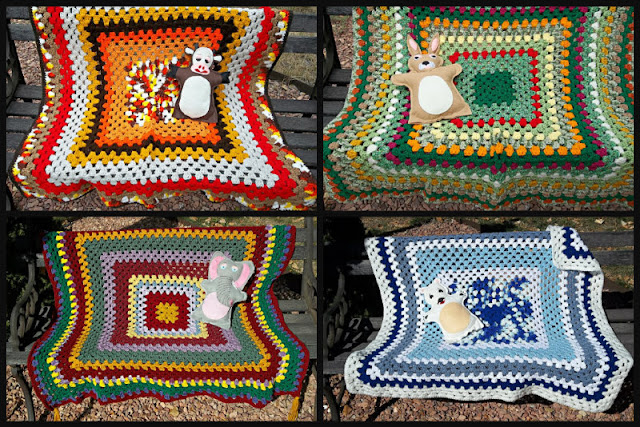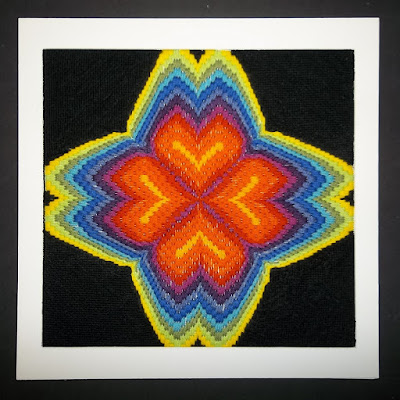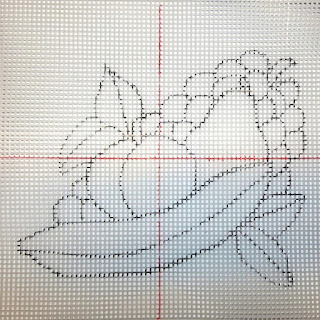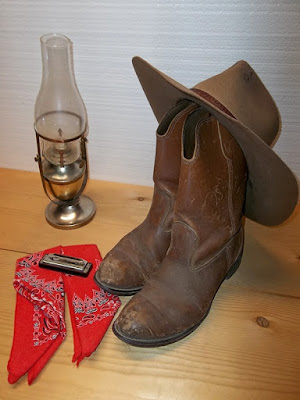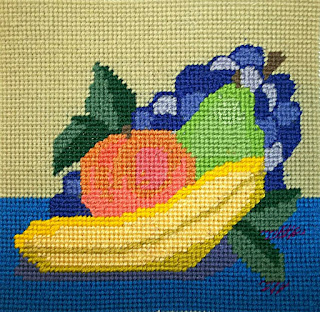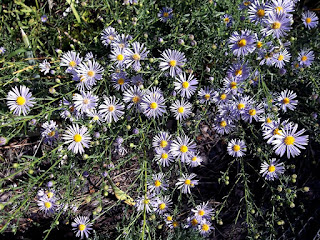 |
| Wild asters in bloom |
I know you have been busy with the Still Life posts, but what else have you worked on lately?
I've been finishing some projects that were put aside while I worked on others. One of these was a mirror-image piece done in upright Gobelin stitch on needlepoint canvas. Here's a picture of it shown horizontally. The pattern is mirrored both from side to side and from top to bottom. Seen in this way, it is pure geometric pattern in design.
 |
| Needlepoint, vertical orientation |
I'm thinking of framing it with two hangers on the back of the frame, one on a long side and one on a short side. Then it could be displayed either way and changed back and forth as desired. What do you think?
You showed a picture of a basket of strawberries at the top of Part II of the Still Life series (August 21, 2017), but you didn't tell us anything about it. Are you going to tell us about it?
Certainly. Here it is again:
 |
| Needlepoint still life of a basket of strawberries |
There are a great many things to consider in doing a still life painting — or its equivalent in needlework. Here is a cheerful little needlepoint of a small basket of strawberries on a blue-and-white checked tablecloth. It is done in a poster-like style with little indication of depth and no highlights or shadows. The emphasis, instead, is on line, shape, color, and texture. Still, there is a good deal of pattern involved. Something like this is a good exercise for a beginner taking up still life needlework. This is the sort of design that can be found in a child's coloring book, for example, for anyone not yet ready to make an original design. The design is done in acrylic yarn on #10 needlepoint canvas. The checked tablecloth is a simple bargello pattern done in upright Gobelin stitch.
The body of the basket is a simple needle-weaving pattern that is shifted every other row. The yarn is brought up from the back of the canvas. Working from left to right, the stitch pattern is over 6 threads, under 2 threads, over 6, under 2, across. The return stitches from right to left are under 6 threads, over 2, under 6, over 2. The sample has been done in two colors to make this easier to see. The stitch pattern is continued until a block of 6 rows is completed. The next block of 6 rows begins shifted 4 threads to the right of the first one. The third block is just like the first one and the fourth is like the second one. Incomplete blocks can be filled in once the pattern is established. Each stitch begins and ends in the same squares as the adjacent ones. No canvas threads are left uncovered.
The strawberries are done in Parisian stitch to indicate their surface texture. The sample is done in two colors for clarity. For more on Parisian stitch and related stitches, see the post for April 10, 2014.
The ribbon-striped wallpaper is done in continental stitch, but the rows are done vertically rather than horizontally. To do this, do downward vertical stitches in the standard continental manner (lower right to upper left) and upward stitches in the return method (upper right to lower left).
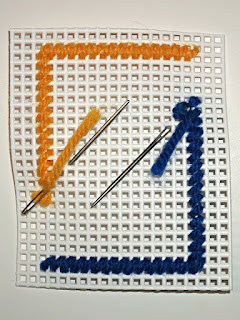 |
| Stitch technique for wallpaper stripes |
Although this is a simple pattern, it still contains some information. The strawberries indicate that it is probably late spring or summer. The lighting indicates daytime. The checked tablecloth indicates that the room is a kitchen or dining room. The bow on the basket handle suggests that the strawberries are a gift. We don't know whether the gift has been delivered to someone in the household or whether it is a gift being prepared for someone else. Either way, it is a pleasant picture. (I like to think the basket is a gift for a friend.)
Are you still doing new crochet projects?
Yes, I am still doing crochet projects. A while ago I started a new line of baby afghans and “loveys”. Loveys are soft stuffed toys based on my puppet designs. I will admit that I have never been fond of the “Pink is for girls; blue is for boys” school of thought. For one thing, babies do not readily see pastels for quite some time. The first color that most of them notice is bright red. Toy-makers have known this for centuries and painted their toys accordingly.
I try to make bright-colored afghans that will appeal to toddlers (and also allow parents and caregivers to teach the children colors and words), and toys that can be used along with storybooks, made-up stories, and even songs. For example, here is “Cottontail's Garden” and its “lovey” (at the left side of the photograph).
The rows of different colors can be associated with the vegetables and fruits the child eats or sees in visits to the grocery store. The lovey could be a good companion to the child when books like the Peter Rabbit series are read or songs like “Here Comes Peter Cottontail” are sung. (Incidentally, J.D. says he feels hungry every time he looks at this afghan.)
 |
| Detail of "Cottontail's Garden" afghan and lovey |
This question is for J.D. You mentioned a hot drink made from dandelion roots. (July 16, 2017) I sure have plenty of dandelions. What can you tell me about the hot drink?”
(The gnome grumbles...) Okay, for reasons too complicated to go into here, I once had to come up with a hot drink made from ingredients easily available in northern Europe a thousand years ago. After some experimentation, I settled on:
4 parts roasted malt barley
1 part roasted dandelion root
1 part roasted chicory root
Grind together to the size and consistency that matches whatever apparatus you use to make coffee - or tea - and brew. No caffeine kick, but it tastes pretty good on a cold morning.
J.D.
Enjoy the rest of the summer!
 This post by Annake's Garden is licensed under a Creative Commons Attribution-NonCommercial-ShareAlike 3.0 Unported License.
This post by Annake's Garden is licensed under a Creative Commons Attribution-NonCommercial-ShareAlike 3.0 Unported License.




